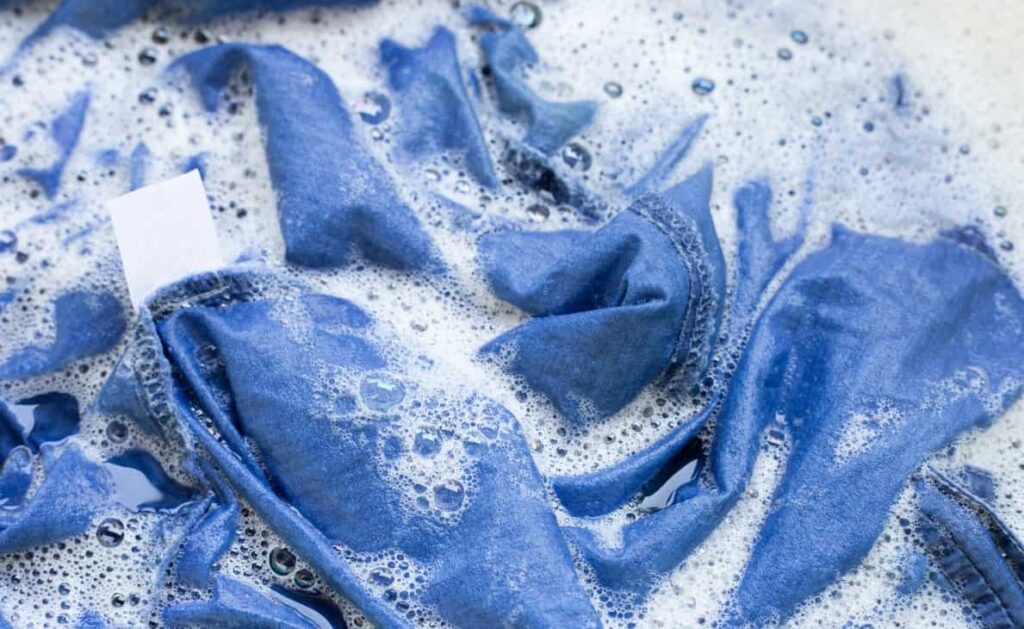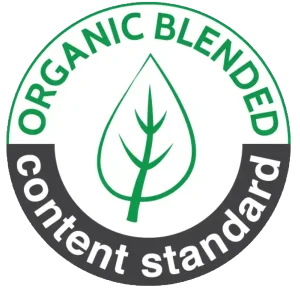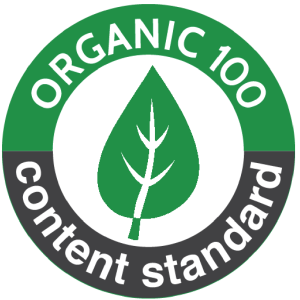In the textile industry, after processing stages, fabric quality inspection is extremely important. Specifically, fabric quality inspection after the wet fabric wash process helps ensure products meet standards and avoid defects.
In the context of the continuously evolving fashion and textile industry, creating products that not only have unique designs but also achieve high quality is crucial for survival. The wet fabric wash process is an essential stage, helping to define style, create unique aesthetic effects, and improve fabric hand-feel. However, precisely because of its complex nature and the use of many factors such as water, chemicals, temperature, and mechanical action, the wet fabric wash process carries many risks of quality defects.
Neglecting or improperly performing quality inspection after wet washing can lead to serious consequences, from defective products, wasted raw materials, to loss of brand reputation.
This article will delve into explaining what the wet fabric wash process is, why quality inspection after wet washing is necessary, common defects that need to be inspected, and effective quality inspection methods. The goal is to provide a comprehensive overview, helping manufacturers and technicians grasp the importance of quality control after the wet fabric wash process, ensuring products meet the highest standards before reaching consumers.
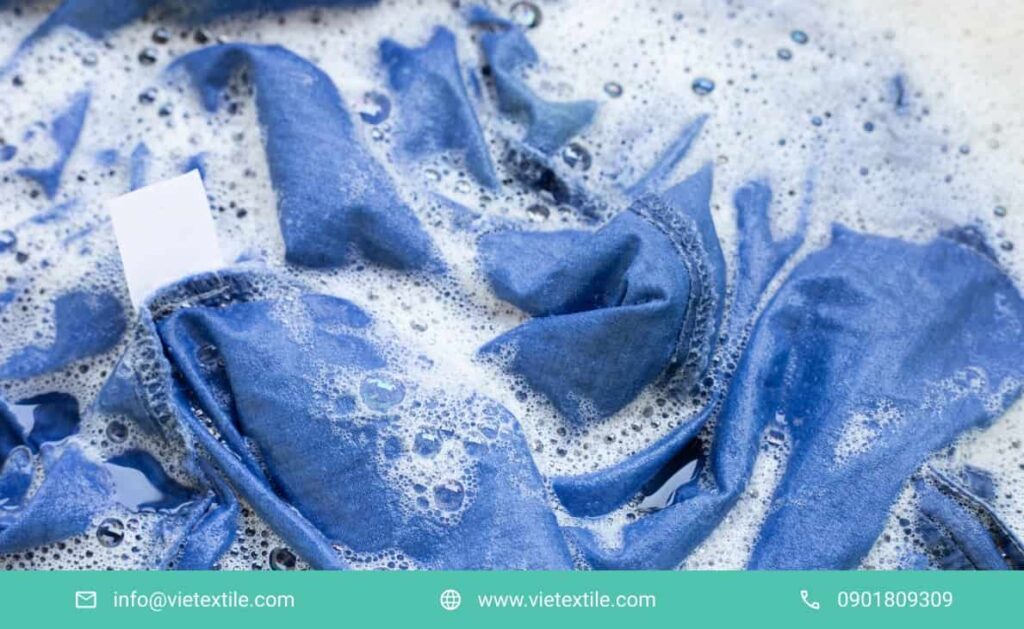
1. What is the Wet Fabric Wash Process?
Nội dung tóm tắt
ToggleThe wet fabric wash process (Wet Washing Process) is a set of techniques for treating fabric or apparel products in a water environment, using chemicals, temperature, and mechanical action. The main purpose of the wet fabric wash process is to change color, soften fabric, create aesthetic effects (such as fading, distressing, mottling), or remove residual impurities after weaving and dyeing stages.
1.1. Overview of Wet Washing
Wet washing is an indispensable finishing step in the modern textile industry, especially popular with denim and cotton products. It helps transform raw, stiff, and plain-colored fabrics into products with unique styles, comfortable hand-feel, and high added value. Depending on the desired effect, the wet fabric wash process can include various steps, from simple scouring to complex techniques like enzyme wash, stone wash, acid wash, or bleach wash. Each technique has its own combination of chemicals, temperature, time, and mechanical action, aiming to achieve specific aesthetic effects on the fabric.
1.2. Common Wet Wash Methods
There are many wet wash methods applied in the textile industry, each bringing a distinctive effect and having its own control requirements in the wet fabric wash process.
1.2.1. Enzyme Wash
Enzyme wash uses biological enzymes (primarily cellulase for cotton fabric) to partially hydrolyze small cellulose bonds on the fiber surface. The main goal of this method is to soften fabric, remove pilling, and create a smoother, softer hand-feel. Enzyme wash can also create a subtle, natural fading effect. This is a more environmentally friendly method compared to harsh mechanical washes, and is favored in the wet fabric wash process for products requiring high softness.
1.2.2. Stone Wash
Stone wash is a traditional wash technique that uses pumice stones or artificial stones in an industrial washing machine along with the fabric. These stones continuously abrade the fabric surface under the machine’s rotation, creating a mechanical wear effect, resulting in distinct fading, natural distressing, and fabric softening. This effect is often rough and highly spontaneous. The stone wash process is a crucial part of the wet fabric wash process when aiming for a rugged vintage look.
1.2.3. Acid Wash
Acid wash uses strong oxidizing chemicals (commonly Potassium Permanganate – KMnO4) to unevenly fade fabric, creating white or off-white contrasting patches on a dark fabric background. This effect is bold and powerful, creating an “acid-washed” or “snow-washed” look. Acid wash is a strong chemical method, requiring a very thorough chemical neutralization process after washing to avoid damaging fabric fibers.
1.2.4. Bleach Wash
Bleach wash uses chemical bleaching agents (such as Sodium Hypochlorite – NaClO) to lighten the overall color of the fabric, reducing the intensity of the original color. The goal is to lighten the fabric color more uniformly than acid wash. This method is often used to transform denim from dark blue to light blue. However, strong bleaching agents can weaken fabric fibers if not controlled.
2. Why is Quality Inspection Necessary After the Wet Fabric Wash Process?
Quality inspection after the wet fabric wash process is an indispensable step, critically important for the final product quality and business reputation.
2.1. Ensuring Aesthetics and Style
The goal of the wet fabric wash process is to create the desired aesthetic effect. However, if not strictly controlled, defects such as color mottling, uneven fading, or stains can appear, completely ruining the product’s aesthetic appeal. Quality inspection helps detect and eliminate defective products, ensuring only products meeting color and effect standards are released to the market. This directly protects brand image and customer satisfaction.
2.2. Maintaining Fabric Durability and Features
Strong chemicals and mechanical action in the wet fabric wash process can reduce fabric fiber durability, causing brittleness, tearing, or pilling if not properly controlled. Quality inspection helps evaluate fabric durability after washing, ensuring the product retains necessary physical properties and has a long service life. This also includes checking for additional features like wrinkle resistance or water repellency if applied in the wash process.
2.3. Minimizing Waste and Incidental Costs
Early defect detection after the wet fabric wash process helps minimize wasted raw materials and incidental costs. If defective products are not detected promptly and are still moved to subsequent stages (cutting, sewing, packaging), the damage will significantly increase. Quality inspection helps eliminate defective products before they consume more resources, or allows for reprocessing (if possible), thereby optimizing production costs and enhancing economic efficiency.
2.4. Enhancing Brand Reputation and Competitiveness
In the competitive fashion market, product quality is a key factor in building and maintaining brand reputation. Providing products with consistent quality, free of defects, and meeting international standards after the wet fabric wash process will strengthen customer and partner trust. This helps businesses stand out from competitors, attract customers, and expand market share, affirming their position in the market.
3. Common Defects to Inspect After the Wet Fabric Wash Process
After the wet fabric wash process, various types of defects can arise, requiring meticulous inspection for timely detection and resolution.
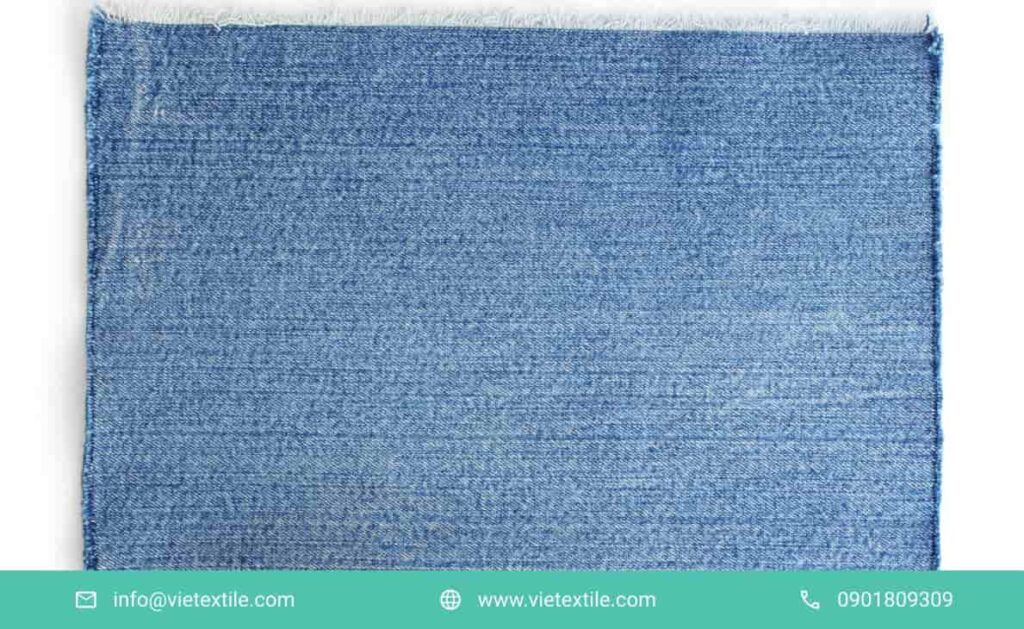
3.1. Color Defects
Color defects are the most common after the wet fabric wash process, directly affecting aesthetics.
3.1.1. Color Bleeding / Migration
This is the phenomenon where dye from one part of the fabric dissolves and transfers to other parts, or color from other details (like tags, sewing threads) bleeds onto the fabric, creating unwanted stains or streaks. Causes are often poor dye colorfastness, washing contrasting colors together, or insufficient rinsing after dyeing.
3.1.2. Uneven Fading / Off-tone
This defect occurs when the fabric’s color fades unevenly, creating random light/dark areas, or the overall color tone does not match the standard sample. Causes can be uneven wash chemical distribution, unstable temperature, or insufficient wash time.
3.1.3. Stains / Spots
Appearance of stains or dirt spots not created by washing. Causes can be undissolved chemical residue, oil/grease from machinery, or dirt clinging to the fabric during the wash process.
3.2. Dimensional and Shape Defects
The wet fabric wash process can strongly impact the dimensions and shape of the product.
3.2.1. Excessive Shrinkage / Stretching
Fabric shrinks more than permissible or stretches excessively, causing the product to no longer match the designed size. Causes are often excessively high water/drying temperature, strong mechanical action, or fabric not adequately pre-treated for shrinkage.
3.2.2. Distortion / Skew
The product is distorted, has misaligned seams, or loses its original shape. Causes can be uneven fabric tension, or fabric not being properly set after washing.
3.3. Fabric Surface and Hand-feel Defects
These defects directly affect the user’s experience.
3.3.1. Stiff / Harsh Hand-feel
Fabric loses its natural softness, becoming stiff or rough. Causes are often chemical residues, minerals in hard water, or over-drying. Refer to stiff fabric after washing for more details.
3.3.2. Pilling / Abrasion / Tearing
The fabric surface shows small lint balls (pilling), localized abrasion forming white marks, or even tearing. Causes are often excessively strong mechanical action from the washing machine or low fabric durability.
3.3.3. Permanent Wrinkles / Creases
Unwanted wrinkles or creases appear and cannot be removed by ordinary ironing. Causes are fabric wrinkling during the wash process and not being effectively flattened before drying.
4. Quality Inspection Methods After the Wet Fabric Wash Process
To ensure product quality, comprehensive and professional inspection methods must be applied after the wet fabric wash process.
4.1. Visual Inspection
This is a basic but extremely important inspection step. Technicians will visually inspect each product under standard lighting to detect visual defects.
- Color inspection: Compare product color with standard samples under different light sources (e.g., daylight, store light) to detect color mottling, uneven fading, or off-tone colors.
- Surface inspection: Look for stains, dirt spots, pilling, abrasion marks, tears, or permanent wrinkles.
- Shape inspection: Evaluate the overall product shape, checking for misaligned seams or deformation.
4.2. Dimensional Stability Test
This test aims to evaluate changes in fabric dimensions after the wet fabric wash process.
- Measurement: Measure product dimensions (length, width, size parameters) before and after washing.
- Calculating shrinkage/stretch: Compare dimensions to calculate the shrinkage or stretch percentage. This percentage must be within acceptable limits according to product standards.
4.3. Colorfastness Test
Colorfastness is a key factor determining the quality of dyed products. These tests are typically performed according to international standards like AATCC or ISO.
4.3.1. Colorfastness to Laundering
Checks the fabric’s ability to retain color when washed. Fabric samples are washed with standard white fabric under specific temperature and chemical conditions. Afterward, the degree of sample fading and color bleeding onto the white fabric is evaluated.
4.3.2. Colorfastness to Light
Evaluates the fabric’s ability to retain color when exposed to sunlight or artificial light for extended periods. Fabric samples are exposed to controlled light conditions and compared to original samples to assess the degree of fading.
4.3.3. Colorfastness to Crocking
Checks the degree of color transfer to another surface due to rubbing (dry or wet). Fabric samples are rubbed with a standard white fabric under a specific force, then the amount of color transferred to the white fabric is evaluated.
4.4. Special Feature Testing
If the wet fabric wash process involves applying finishing chemicals to impart special features (water repellency, wrinkle resistance, anti-bacterial), these features need to be tested according to corresponding standards.
4.5. Chemical Safety Testing (RSL Testing)
For export products or children’s products, testing for hazardous chemical residues (Restricted Substances List – RSL) is mandatory. Fabric samples are sent to specialized laboratories for analysis of the presence of prohibited substances such as formaldehyde, heavy metals, azo dyes, etc. This ensures product safety for consumers and compliance with international regulations.
5. Process for Handling Defects Detected After the Wet Fabric Wash Process
When defects are detected after the wet fabric wash process, timely and correct handling is crucial to minimize losses.
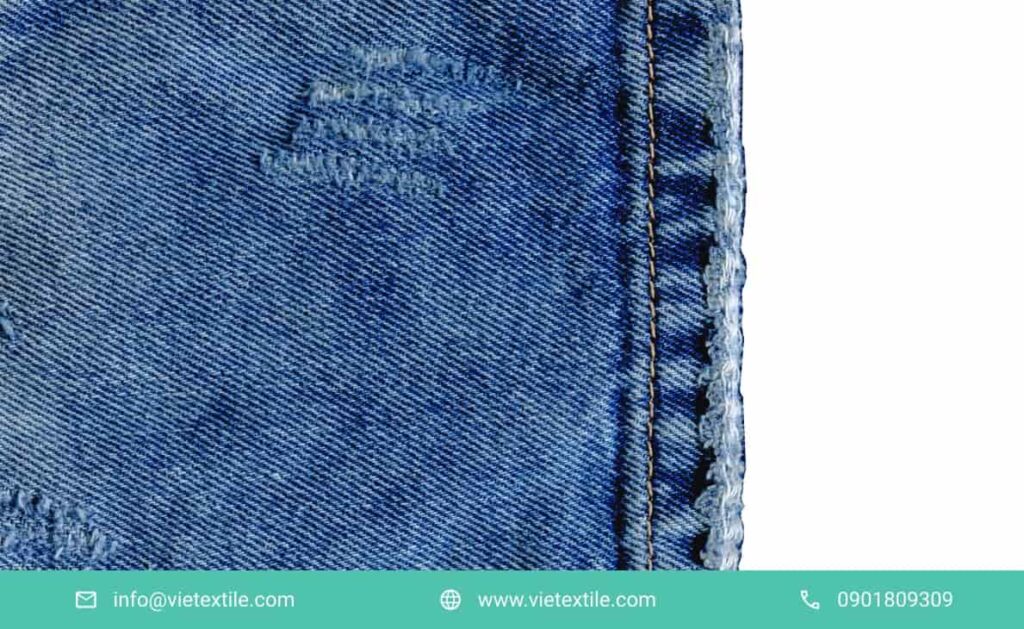
5.1. Root Cause Analysis
The first step is to accurately identify the cause of the defect. This may include:
- Checking incoming fabric: Were there pre-existing defects?
- Checking chemicals: Were the chemical types, concentrations, and preparations correct?
- Checking the wash process: Were temperature, time, water-to-fabric ratio, and rotation speed stable?
- Checking machinery: Was the machine operating normally, was it clogged or worn?
- Checking post-wash treatment: Was rinsing and neutralization thorough? Thorough analysis helps provide suitable corrective solutions and prevents recurrence.
5.2. Corrective Measures
Depending on the type and severity of the defect, different corrective measures can be applied:
- Re-processing: For minor defects such as slightly light color or unsatisfactory hand-feel, reprocessing can be done by re-washing with adjusted parameters or adding appropriate chemicals.
- Manual correction: For small stains or loose threads, they can be removed manually.
- Downgrading: If the defect cannot be fully corrected but the product is still usable, it can be sold in a lower segment.
- Discarding: For serious defects (e.g., fabric tearing, burning, severe color mottling that cannot be repaired), the product must be discarded to avoid affecting brand reputation.
5.3. Recurrence Prevention
Prevention is the most effective measure to ensure quality after the wet fabric wash process.
- Standardization: Establish and strictly adhere to wash and quality inspection processes.
- Personnel training: Ensure technicians have sufficient knowledge and experience.
- Machinery maintenance: Perform regular maintenance and upgrade equipment when needed.
- Use quality chemicals and materials: Only use certified products.
- Sample testing (Lab wash): Always perform small-scale wash tests before mass production to detect and resolve issues early.
6. VieTextile: Expert in Quality Inspection After the Wet Fabric Wash Process
VieTextile proudly stands as a leading partner in textile dyeing and fabric finishing in Vietnam. We deeply understand the challenges and defects that can arise in the wet fabric wash process, and possess a stringent quality control system to ensure products meet the highest standards.
With a modern laboratory, advanced testing equipment, and a team of experienced engineers and specialists, VieTextile commits to:
- Comprehensive quality inspection: Performing tests from visual inspection, dimensions, colorfastness, to chemical safety.
- Accurate error analysis and diagnosis: Identifying the root cause of all problems to provide optimal corrective solutions.
- Preventive solution consultation: Supporting customers in building effective production and quality control processes, preventing defect recurrence.
- Product quality assurance: Committed to ensuring products after the wet fabric wash process achieve consistent quality, durability, and safety, meeting all export standards.
Let VieTextile accompany you, ensuring your products always achieve perfect quality after the wet fabric wash process.
7. Frequently Asked Questions
To help our valued customers better understand quality inspection after the wet fabric wash process, here are some frequently asked questions:
7.1. Is quality inspection after wet washing necessary for all products?
A: Yes, quality inspection after the wet fabric wash process is necessary for all products, especially apparel and textile products with high requirements for color, dimensions, and durability. For export products, this is mandatory to comply with international standards.
7.2. How to ensure the accuracy of tests?
A: To ensure accuracy, tests need to be performed in a controlled environment (temperature, humidity, light), using calibrated testing equipment, and complying with international standard test methods (AATCC, ISO). Technical personnel also need to be well-trained and experienced.
7.3. Does VieTextile provide fabric quality inspection services after wet washing?
A: Yes, VieTextile provides fabric quality inspection services after the wet fabric wash process as part of our fabric finishing services or upon specific customer request. We have a modern laboratory and a team of experts to perform comprehensive tests.
7.4. Is the cost of quality inspection after wet washing high?
A: The cost of quality inspection after the wet fabric wash process depends on the number of samples, fabric type, and the number of tests required. Although there is a cost, it is a worthwhile investment to avoid larger losses due to defective products and to protect brand reputation.
7.5. Can defective fabric be restored after wet washing?
A: The possibility of restoring defective fabric after the wet fabric wash process depends on the type and severity of the defect. Some minor defects (e.g., slightly light color, slightly stiff fabric) can be reprocessed. However, severe defects (e.g., tearing, fabric burning, severe color mottling) are very difficult or impossible to fully restore.
8. Contact Information
To learn more about quality inspection services after the wet fabric wash process and receive optimal solution consultation for your products, contact VieTextile today!
- Hotline: 0901 809 309
- Email: info@vietextile.com
- Website: https://vietextile.com

